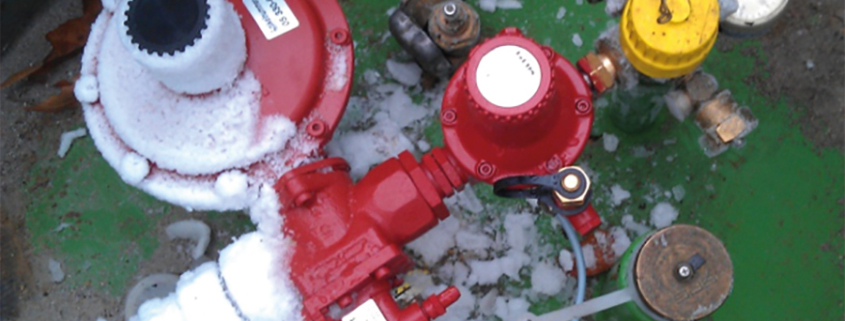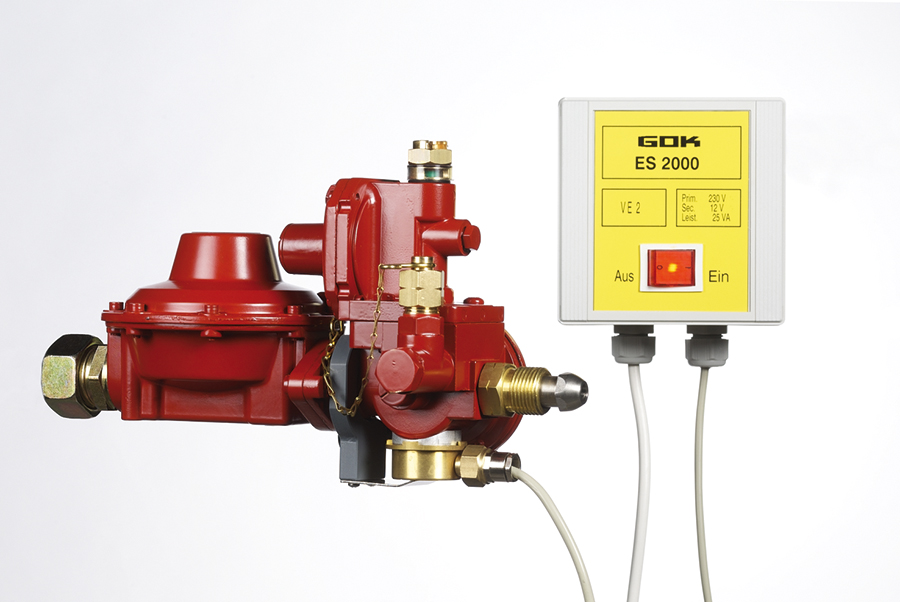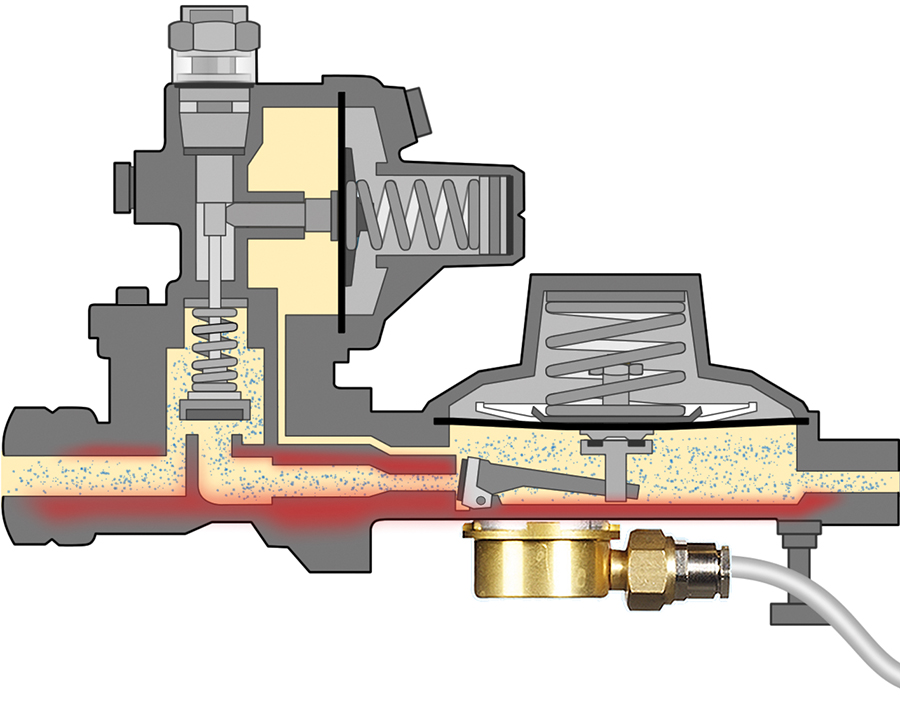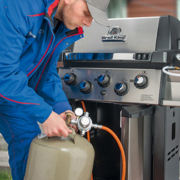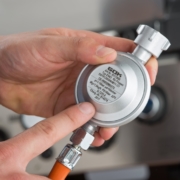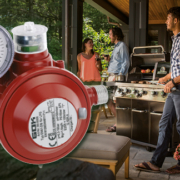How can a pressure regulator ice over?
There are two possibilities which lead to the icing of pressure regulators in LPG systems. Surprisingly, ambient temperatures are not even needed below the freezing point in order to ice the pressure regulator.
You are sure to know the phenomenon: The LPG system always refuses to operate just when you really need to use it. In some cases, this is due to the pressure regulator icing. But what exactly does this mean and what are the causes of icing?
Background
As you can imagine, ice disables the pressure regulator. Conversion from liquid to gaseous state of a medium (e.g. LPG) requires energy. This is obtained exclusively from the energy supply of the environment and of the medium. As a result of this, LPG tanks and the connected fittings cool down – due to the so-called expansion cold.
Option one: Internal icing
You would think that only harsh minus temperatures are particularly dangerous. However, they are only to some degree, because at levels below zero, condensation produced in the tank freezes and has no effect on the system.
This becomes dangerous at temperatures just above the freezing point – mostly in combination with a high withdrawal output. Condensation is also carried away in the gas flow and enters the pressure regulator. Due to the resulting expansion cold of the gas, the pressure regulator is colder than the environment. Moisture settles, freezes and hinders the mechanical system, causes safety devices to respond or blocks the nozzle. Consequence: The output is reduced or the system goes into fault mode.
This can happen with both LPG tanks and cylinders.
Remedy for tanks
To prevent icing, you can install a regulator heating system.The regulator heating is suitable for double-stage tank regulators and 1st stage regulators. As both fittings are always installed directly on the LPG tank, the heater has an ATEX approval for zone 1 and 2.
You can find the approval in the assembly and operating manual on our website.
Remedy for cylinder systems
Certain pressure regulators (e.g. type EN61) or regulator systems can be equipped with an Eis-Ex. The Eis-Ex has the same function as the regulator heating: it heats the pressure regulator.
Option two:External influences ice up the pressure regulator
In addition to the internal icing of a pressure regulator described above, there is the external icing.This can happen, for example, if
a) moisture from the air initially settles as condensation water and at decreasing temperatures as white frost on the fitting.
b) water accumulates in the pressure regulator (for example in the case of buried LPG tanks) and freezes.
Remedy in case of moisture from the air
We recommend that you install the pressure regulator at an angle to the breathers. This way, condensation water produced can be safely drained from the pressure regulator. If the pressure reducer nevertheless ices up, the regulator heating helps here.
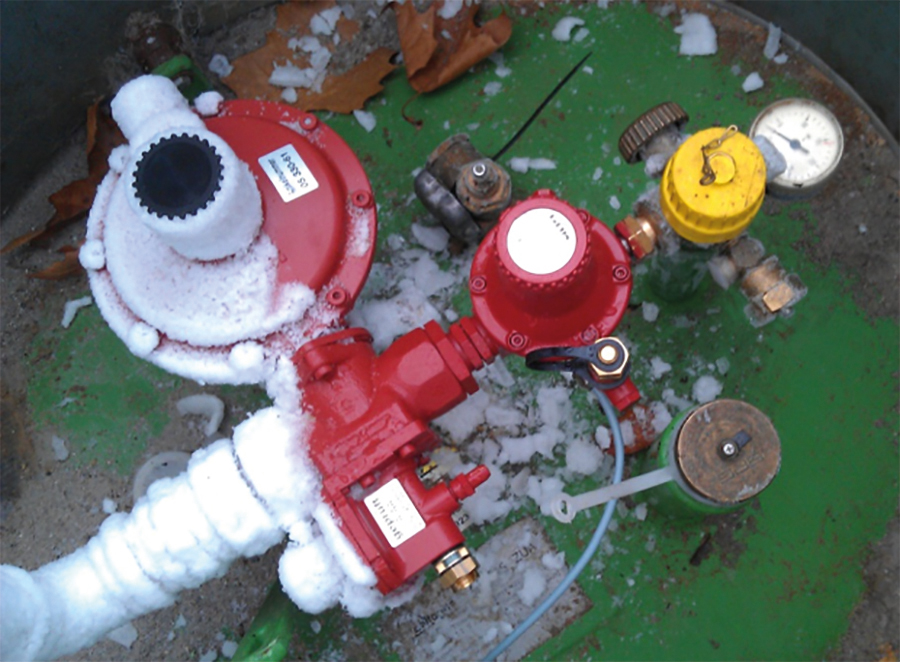
Pressure regulator iced up from outside, where the regulator heating was in use for just under 20 minutes.
Remedy for water in the pressure regulator
In principle, an LPG tank must be stored in such a way that no water accumulates in the dome.If this still happens, we recommend using a bleeding and ventilation kit for tank regulators. This prevents the water from getting into the pressure regulator.
